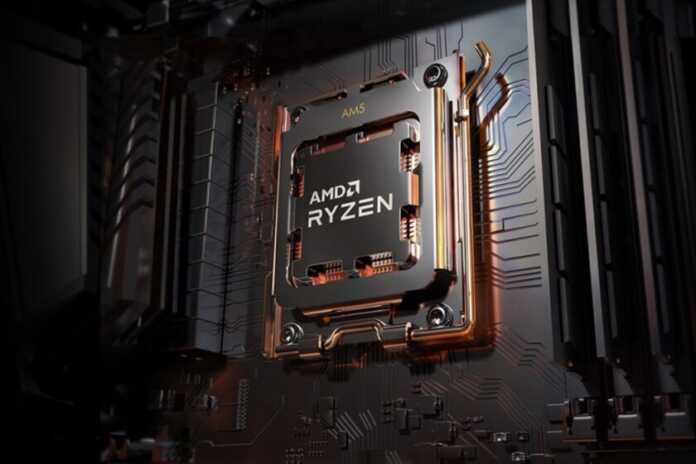For years AMD was second best. They could not compete with the best of Intel, but little by little they were gaining ground and in recent years the company has turned the tables. Its latest families of processors have matched and surpassed equivalent proposals from Intel, but be careful, because today a new round of that particular combat begins: the AMD Ryzen 7000 arrive.
New year, new photolithography. There are many new features in this new iteration of these processors, but one of the most notable is the new photolithography for its chiplets. We explained it in detail in May when we talked in detail about the new Zen 4 architecture, but to cut it short: in the Ryzen 5000 – the previous generation – 7 and 12 nanometer photolithographs were used for the CCD and IOD chiplets. In the Ryzen 7000 these processes become 5 and 6 nanometers respectively. What does that mean? Many more transistors per unit area, and much better efficiency at the same power. But it is that in AMD they especially want the latter.
The MHz war is back. Or in this case, of the GHz. The Ryzen 7000 aimed to increase their performance in single-thread applications by more than 15%, and one of the keys to achieving it —in addition to that new photolithography and the Zen 4 architecture— is to increase the clock frequency, which in the ambitious Ryzen 9 7950X can reach 5.7 GHz. An absolute madness that, yes, makes the price of this processor high. Be careful, because more modest processors will also go full throttle: the “modest” Ryzen 5 7600X will reach 5.3 GHz, for example.
|
Model |
Ryzen 9 7950X |
Ryzen 9 7900X |
Ryzen 7 7700X |
Ryzen 5 7600X |
|---|---|---|---|---|
|
Graphics |
AMD Radeon™ Graphics |
AMD Radeon™ Graphics |
AMD Radeon™ Graphics |
AMD Radeon™ Graphics |
|
CPU cores |
16 |
12 |
8 |
6 |
|
threads |
32 |
24 |
16 |
12 |
|
maximum frequency |
Up to 5.7GHz |
Up to 5.6GHz |
Up to 5.4GHz |
Up to 5.3GHz |
|
base frequency |
4.5GHz |
4.7GHz |
4.5GHz |
4.7GHz |
|
Supported memory |
DDR5-5200 DDR4-3200 |
DDR5-5200 DDR4-3200 |
DDR5-5200 DDR4-3200 |
DDR5-5200 DDR4-3200 |
|
L3 cache |
64MB |
64MB |
32MB |
32MB |
|
Default TDP |
170W |
170W |
105W |
105W |
|
Price |
€891.32 |
€700.05 |
€508.78 |
€381.26 |
Be careful with the electricity bill. That commitment to power is certainly promising, but the reality is that to offer this performance improvement there is another affected: consumption. In the Ryzen 9 5950X the TDP was 105 W, almost “modest”. In the new Ryzen 9 7950X the TDP shoots up to 170 W, so taking advantage of the benefits of these processors will make our electricity bill suffer.
This processor has an integrated graphics. One of the novelties in this family is the inclusion of AMD Radeon graphics integrated in the processor. This graphics processor is present in those four initially launched models (with the surname “X”), and it is an interesting component, although very modest: it has only two computing units (128 Stream Processors), its power is just 0.56 TFLOPS, when an already limited Radeon 680M (12 CUs, 768 Stream Processors) reaches 3.7 TFLOPS.
you will need a new board. The socket, yes, changes for this family, which now uses the AM5 Socket instead of the AM4 of the Ryzen 3000 and Ryzen 5000. This makes it possible to enjoy important advantages, such as the aforementioned integrated GPUs with RDNA 2 microarchitecture or PCIe 5.0 support, but it also forces us to change the motherboard if we want to update our equipment with these micros. Be that as it may, and in the absence of our tests, what is clear is that AMD is upping the ante. We’ll see how Intel responds.










